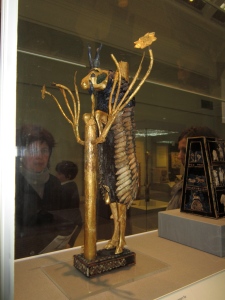You know what they say about old habits. While various people are protesting things like critical race theory, there are still some scholarly holdouts for colonial terminology. I know the area of “Ancient Near Eastern” studies fairly well. The problem is that “Near East” is a comparative term. Near whom? Europe, of course. Long ago scholars stopped using “oriental” to describe East Asia. “Oriental” means eastern. East to whom? Europe. You see the problem? These terms assume European centrality, and the entire world can be divided up according to a colonialist perspective, rather like those novelty maps of the United States from a New Yorker’s point of view. East Asia and South Asia are now in common use, but it’s still “Near East” and even “Middle East.”
What are the alternatives, did I hear you ask? For decades now there has been a move to use “Ancient West Asia” instead. It’s descriptive rather than imperial. There have been objections, mostly from older white men. It’s disruptive to change names, and besides, “West Asia” isn’t technically correct. The area under study includes Egypt, and that’s Africa! As Egyptology has grown, however, Sudan has increasingly entered the picture. In other words, our picture of the ancient world is changing. West Asia may not be precise, but it conveys the idea. Cultures don’t always neatly follow borders, ancient or modern. The people of ancient Israel borrowed from both Egypt and Mesopotamia. Is it so wrong to try to use a non-Eurocentric title?
Also, consider East Asia—it’s a fuzzy descriptor. As is South Asia. Although China and India are the largest respective states, these are modern political borders. Yes, ancient people had borders too, but generally only emperors (men) went to great lengths to take someone else’s land on a large scale. Terms like “Ancient Near East” perpetuate, often under the radar, this Euro-normativism. Too much change too fast, I know, creates many problems. A large part of the Trumpian reactionary mindset is based on fear of too much change. Still, who pays attention to “Ancient Near Eastern” studies anyway? It certainly isn’t a growing field. The area under study is wide and sprawling. It includes Turkey and stretches down to Yeman. It can reach over to Iran and Afghanistan—to the very borders of India. If we were to agree in principle that a Eurocentric term should be avoided, we might consider using Ancient West Asia. Or we might, like the emperors of old, keep on doing things our own way. It’s a habit, after all.













